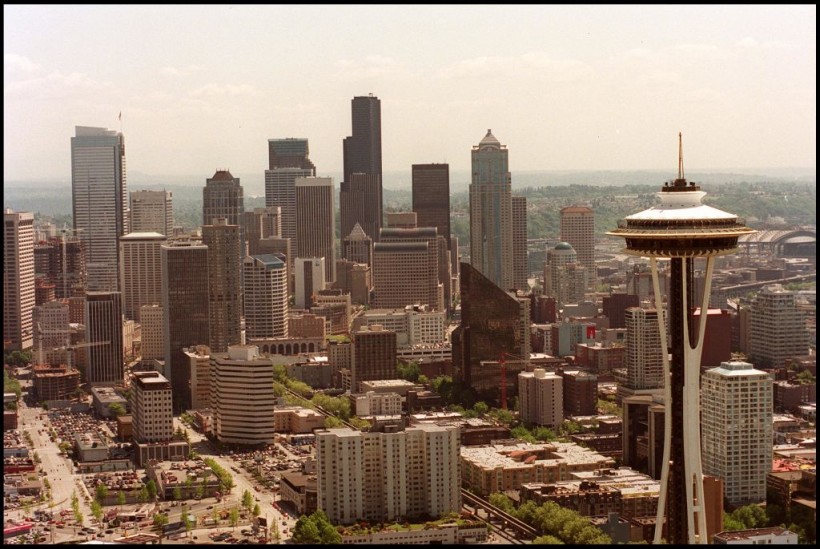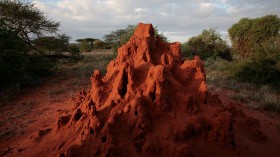Seattle is a city that sits on a fault line, a crack in the Earth's crust where two tectonic plates meet. The Seattle Fault is a 40-mile-long zone that runs from the Kitsap Peninsula to the Cascade Mountains, crossing Puget Sound and the city of Seattle.
The fault is capable of producing powerful earthquakes that can shake the region and cause damage to buildings, roads, bridges, and utilities.
But when was the last time the Seattle Fault ruptured? And how often does it do that?
These are questions that scientists have been trying to answer for decades, using various methods, such as digging trenches, drilling cores, and analyzing sediments.
However, these methods have limitations and uncertainties, and sometimes produce conflicting results.
A new study published in the Bulletin of the Seismological Society of America offers a new way of looking for clues about the Seattle Fault's earthquake history: by mapping and dating landslides.
Landslides are mass movements of rocks and soil that can be triggered by earthquakes, especially in steep and unstable slopes.
By identifying and dating landslides that occurred in the Puget Lowlands, the area around the Seattle Fault, researchers hope to find evidence of past earthquakes that left their mark on the landscape.
Mapping and Dating Landslides with Lidar and Roughness
 (Photo : Dan Callister/Newsmakers via Getty Images)
(Photo : Dan Callister/Newsmakers via Getty Images)

The study, led by Erich Herzig of the University of Washington, used a technique called airborne lidar to map more than 1,000 deep-seated landslides in the Puget Lowlands.
Airborne lidar is a technology where a plane mounted with lasers is used to measure the shape of the land surface in detail, even through vegetation.
The resulting high-resolution maps can reveal features that are otherwise hidden by trees and plants, such as the scars and deposits of landslides.
The researchers then used another technique to estimate the age of the landslides: measuring their surface roughness.
The idea is that landslide surfaces become smoother over time, as they are eroded by water, wind, and vegetation.
By comparing the roughness of different landslides, the researchers can infer their relative ages. The rougher the surface, the younger the landslide.
To calibrate their roughness measurements, the researchers also collected wood samples from some of the landslides and used radiocarbon dating to determine their absolute ages.
Radiocarbon dating is a method that measures the amount of a radioactive isotope of carbon in organic materials, such as wood, and calculates how long ago they died. The wood samples provided a way to check the accuracy and reliability of the roughness method.
Also Read: Landslide Prediction: Geologists Develop New AI to Forecast Where Mudslides May Happen
Finding Evidence of Past Earthquakes
The researchers found that the landslides in the Puget Lowlands are not randomly distributed, but clustered in certain areas and time periods.
They compared their landslide map to ground motions generated by different Seattle Fault earthquake scenarios, and found that the scenario that best matches the landslide clusters is one that produces the strongest shaking in a west to east band from west Seattle to Mercer Island and the bluffs bordering Puget Sound.
This scenario is consistent with the evidence of the last known major Seattle Fault earthquake, which occurred about 1,100 years ago and had a magnitude of 7 to 7.5.
This earthquake caused a dramatic uplift of the land on the south side of the fault, raising the shoreline by up to 20 feet and creating a series of marshes and lakes.
It also triggered a tsunami that flooded the coast and left behind sand deposits. The earthquake was so powerful that it was felt as far away as Oregon and British Columbia.
The researchers also found evidence of older earthquakes along the Seattle Fault, based on the ages of the landslides.
They identified four other time periods when landslides were more frequent: 4,600-4,200 years ago, 4,000-3,800 years ago, 2,800 to 2,600 years ago, and 2,200 to 2,000 years ago.
These time periods could correspond to previous ruptures of the Seattle Fault, or other nearby faults, such as the Tacoma Fault or the Southern Whidbey Island Fault.
Related article: Massive Landslide Kills 26 In India; Rescue Operations Being Hampered By Heavy Rains
© 2024 NatureWorldNews.com All rights reserved. Do not reproduce without permission.





